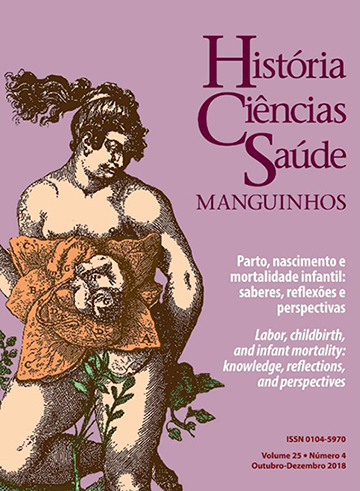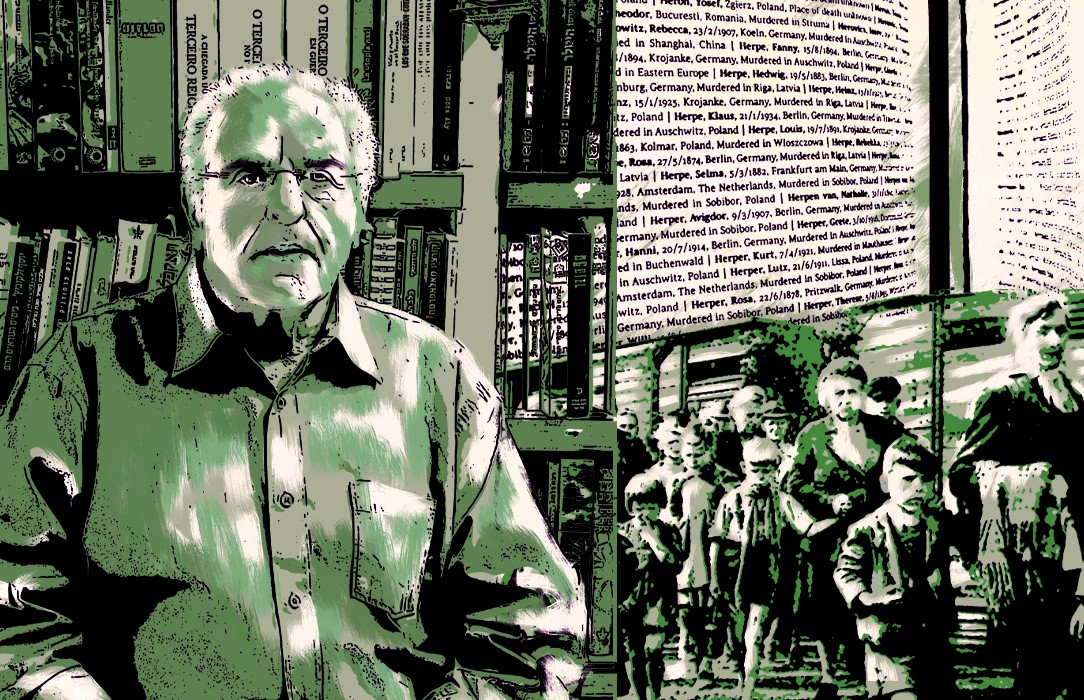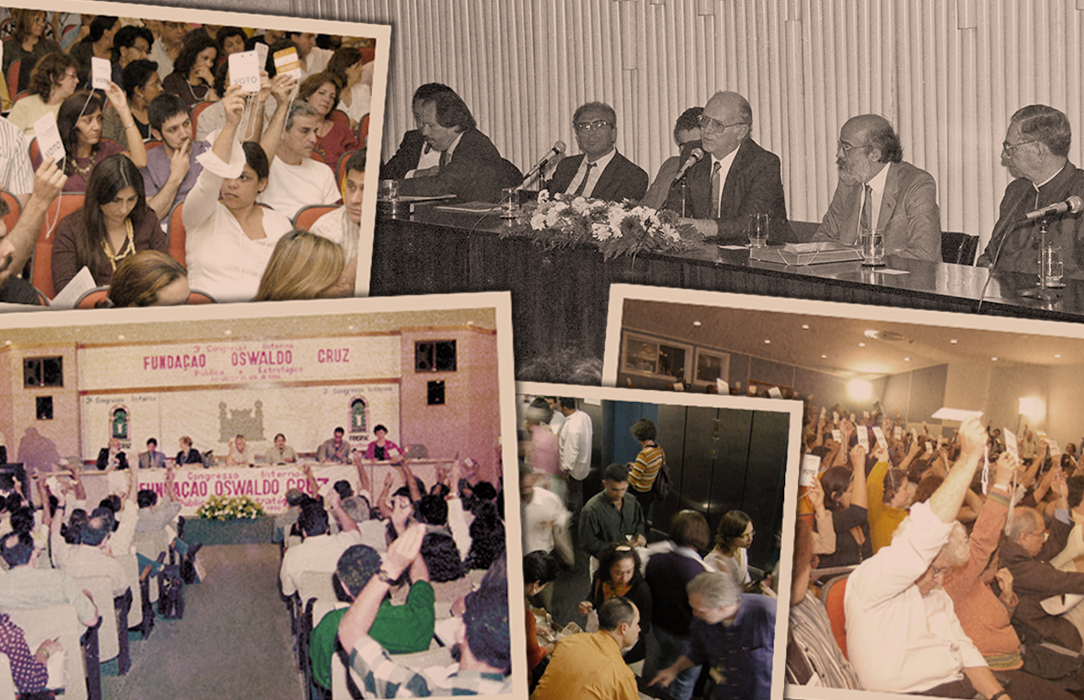 |
Labor and childbirth. Health and infant mortality. These are the topics of two dossiers that form the center of a special issue of the Casa de Oswaldo Cruz’s quarterly science journal História, Ciências, Saúde – Manguinhos (HCSM Journal). In addition to these thirteen thematic articles, published online in Portuguese, English, and Spanish, other texts appear in the sections Sources, Research Notes, Images, and Books & Networks. The full content of issue number 4, volume 25 (October-December 2018) is now available at SciELO (open access).
More from HCSM Journal:
SciELO: Hist. cienc. saude-Manguinhos vol.25 no.4
HCSM Blog: Zika and Aedes aegypti, new and old challenges
HCSM Journal has earned the highest quality score in the field of History (A1) from Qualis, the system that the Brazilian Federal Agency for the Support and Evaluation of Graduate Education (CAPES) uses to evaluate graduate courses and science journals in Brazil. HCSM Journal is indexed by Thomson Reuters, which offers one of the world’s largest databases of science journals, as well as by SCImago Journal Rank (SJR) and SciELO, among other databases in Brazil and abroad.
In the Editors’ Note, science editors Marcos Cueto and André Felipe Cândido da Silva salute the new Declaration on Primary Health Care that was endorsed at the conference of the same name, held in Astana, Kazakhstan, in October 2018. The editors reaffirm history’s vital values, including the relevance of science and public health and the fight against any form of discrimination, as they welcome the current debate over the importance of open science to the future of science publications, slated to be the topic of the SciELO 20 Years Conference in September of this year, in São Paulo.
The researchers Luiz Antônio da Silva Teixeira (COC/Fiocruz) and Andreza Rodrigues Nakano (School of Nursing, Federal University of Rio de Janeiro) and the post-doctoral fellow Marina Fisher Nucci (COC/Fiocruz) are the guest editors of this issue of HCSM Journal. In a discussion entitled “Labor and Birth: Knowledge, Reflection, and Different Perspectives,” they argue that “the medicalization of labor, childbirth, and life is part of our society, and looking at these issues is one way of transforming it.”
Analysis
The Analysis department of the dossier “Labor and Childbirth” features eight original articles that explore: the reproductive health of women in Rio de Janeiro in the early twentieth century; scientific discourse favoring the medicalization of childbirth in Peru, 1900-1940; the medicalization of pregnancy and childbirth in the pages of the magazine Claudia, 1961-1990; reflections on the synthesis and early use of oxytocin in Brazilian obstetrics; competition in the art of midwifery in the city of Rio de Janeiro from 1835 to 1900; “modern motherhood” and the medicalization of childbirth in the pages of the Boletim da Legião Brasileira de Assistência, 1945-1964; gender, history, and the medicalization of childbirth: the exhibit “Women and Health Practices”; and the trans-nationalization of normal childbirth in Brazil: a study of the last five decades.
Sources
The Sources department offers librarian Wanda Weltman’s review of the literature on the medicalization of childbirth in Brazil, as published in Brazilian journals available through the SciELO, HISA, and LILACS databases. In a second article, Larissa Velasquez, doctoral candidate with the COC Graduate Program in the History of Science and Health, analyzes sources on the history of gynecology and obstetrics in Brazil, based on a survey of Brazilian library databases.
Research Note
“The Medicalization of Childbirth in Brazil Through the Study of Obstetrics Handbooks” is the title of a research note by Lucia Regina de Azevedo Nicida, doctoral candidate with the Graduate Program in Women’s and Children’s Health at the Fernandes Figueira National Institute of Women’s, Children’s, and Adolescents’ Health (IFF/Fiocruz). In another article, Professor Rafael de Brito Dias and master’s candidate Cristiane Kämpf, of the School of Applied Sciences at the University of Campinas (Unicamp), draft a preliminary analysis of how activist obstetricians who advocate the humanization of labor and delivery in Brazil view the episiotomy, the incision to the perineum that enlarges the birth canal.
Images
In the Images department, Ilana Löwy, researcher at the Centre de Recherche Médecine, Sciences, Santé, Santé Mentale, Societé (CERMES), investigates the contextualization of childbirth facilities in Rio de Janeiro. In another article, Adriana Medeiros, photographer at the Fernandes Figueira Institute (IFF/Fiocruz), presents her photo documentation of the David Capistrano Filho Childbirth Center in Rio de Janeiro, with pictures taken between 2005 and 2017.
Books & Networks
“Revisiting Global Health from the Periphery: The Zika Virus” is the title of a book review by Professor Jose Ragas, of the Pontifical Catholic University of Chile, who comments on Debora Diniz’s Zika: From the Brazilian Backlands to Global Threat. Professor Rita de Cássia Marques, of the Federal University of Minas Gerais (UFMG), reviews Gisele Sanglard’s Amamentação e políticas para a infância no Brasil: a atuação de Fernandes Figueira, 1902-1928 (Breastfeeding and infant and childhood policies in Brazil: the work of Fernandes Figueira, 1902-1928). Lastly, Maria Terezinha Bretas Vilarino, professor at the University of Vale do Rio Doce (MG), reviews the book Qui gardera les enfants? Mémoire d’une feministe iconoclaste (Who will take care of the children? Memoir of an iconoclastic feminist), by Yvonne Knibiehler.
Dossier on Health and Infant Mortality
Closing out the year of 2018 for HCSM Journal, five articles are featured in the dossier on Health and Infant Mortality: mortality and morbidity in the German colonies of southern Brazil, 1850-1880; the beginnings of pediatrics in Buenos Aires, Argentina, 1890-1920; psychiatric care for abnormal children in Santa Catarina in 1940; oral health education and care for children, 1912-1940; and infant mortality in Santiago, Chile, 1860-1914.






